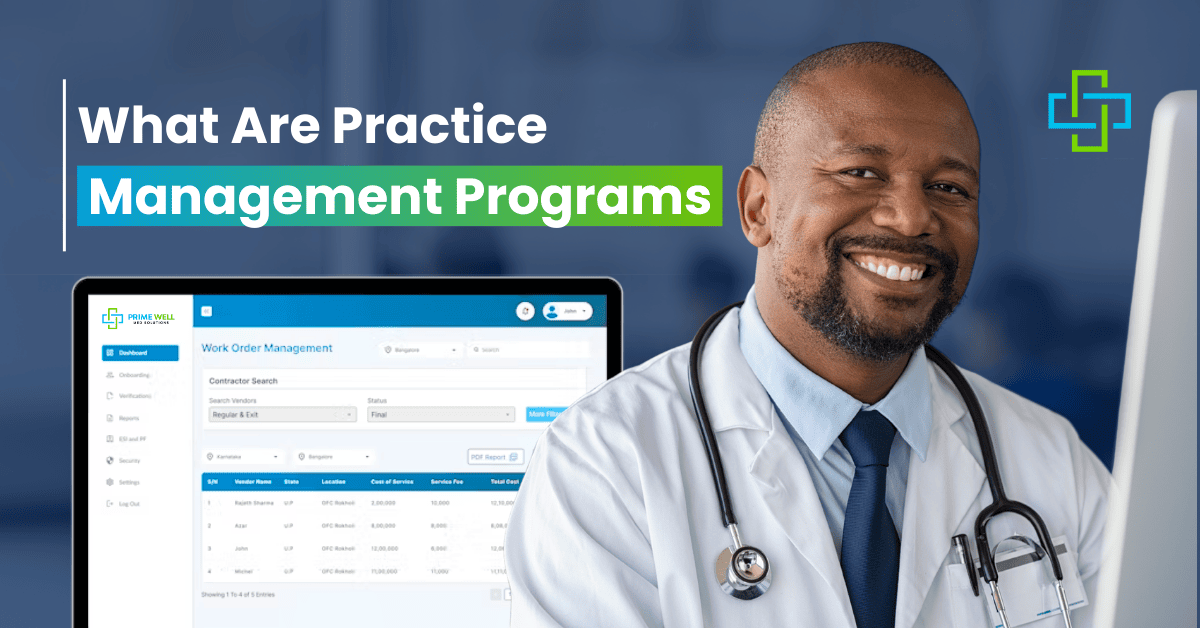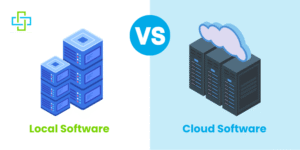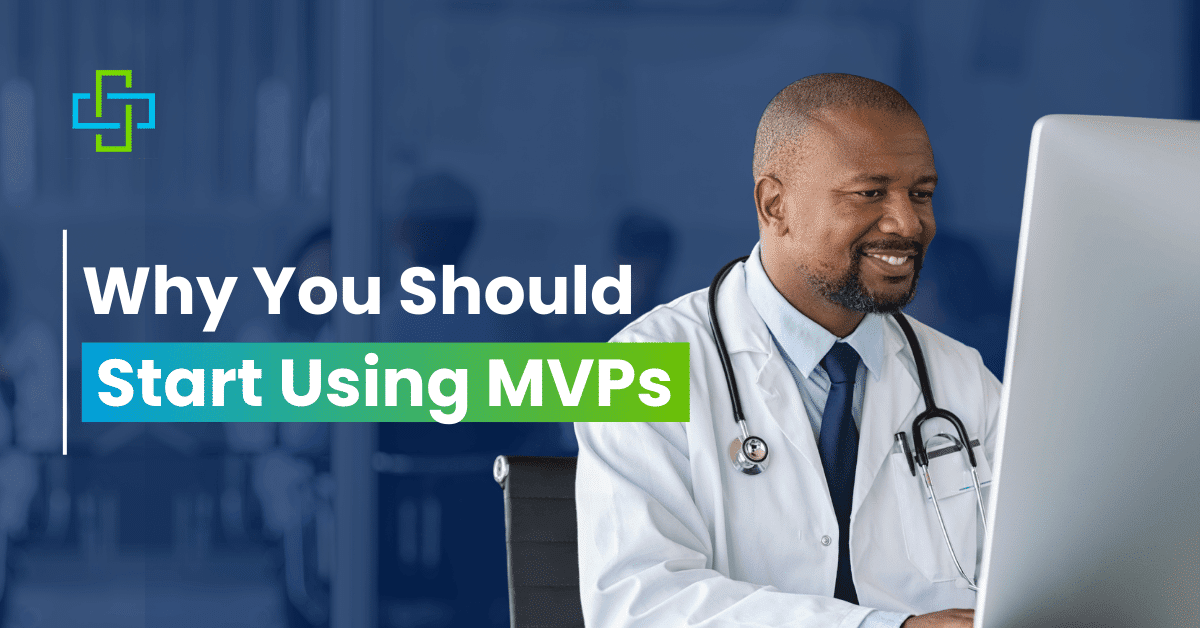Your medical office is drowning in paperwork. Appointment books are a mess. Insurance claims get rejected left and right. Staff spend more time on computers than helping patients. Sound familiar?
What are practice management programs? They’re computer programs that handle the boring stuff so you don’t have to. Think scheduling, billing, patient records, insurance claims, etc. All the things that eat up your day but don’t involve treating people.
These programs are not magic. They won’t solve every problem in your practice. But they can turn a chaotic office into something that actually runs on time.
What Do These Programs Do?
Practice management programs handle three main things.
- First, they schedule appointments without the headaches. No more double booking patients or forgetting who’s coming in when.
- Second, they deal with money stuff. Insurance claims, patient payments and billing cycles. All automated. Instead of your staff spending hours on phone calls with insurance companies, the program does most of it.
- Third, they store patient information in one place. Medical history, insurance details, contact info and previous visits. Everything your staff needs to know about each patient. No more digging through file cabinets or asking patients the same questions every visit.
Most programs connect all three pieces together. When someone books an appointment, their insurance gets verified automatically. After the visit, billing happens without extra steps.
The Reality Check Every Practice Needs
Many compliance programs look great on paper but this is oftentimes different. What most people don’t mention is that these programs can be a real pain to set up. Your staff will complain. Things will go wrong. The first few weeks might be worse than what you had before. That’s normal.
But once everyone gets used to it, most practices wonder how they survived without one. The time savings add up fast. Less time on administrative tasks means more time for patients.
Not every program works for every practice. A busy family clinic needs different features than a specialist office. Don’t believe anyone who says their software works perfectly for everyone.
When You Might Need Extra Help
Some practices buy the software and figure it out themselves. Others hire practice management services to handle the technical stuff. These services set up the program, train your staff and fix problems when they happen.
The trade off is simple. Do it yourself and save money but deal with more headaches. Pay for services and things go smoother but cost more upfront. Most practices find somewhere in the middle works best.
Practice management consulting services look at your entire operation, not just the software. They watch how your office works, find the bottlenecks and suggest changes. Good consultants have worked with dozens of practices like yours and know what really works.
What are the Most Popular Options Right Now?
Epic dominates hospitals but it’s way too complicated for most private practices. Smaller offices usually go with NextGen, eClinicalWorks or athenahealth. Each has different strengths and weaknesses.
- NextGen handles billing really well but looks outdated.
- eClinicalWorks tries to do everything, which means some features work great and others feel half finished.
- Athenahealth costs more but their customer service answers the phone.
Prime Well Med Solutions has been getting attention lately. They package software with services, so you’re not just buying a program but you’re getting ongoing support. Whether that’s worth the extra cost depends on how much technical headache you want.
Most of these programs do the same basic things. The differences come down to ease of use, customer service and how well they work with other systems you already have.
Cloud vs. Local Software Explained
Most new practice management solutions run in the cloud, meaning you access them through the internet. Cloud systems update themselves automatically. When the software company fixes bugs or adds features, you get them without doing anything.
The security argument mostly goes away when you realize that software companies have better IT security than most medical practices. Your local server in the supply closet probably isn’t as secure as you think.
Internet reliability has improved enough that outages rarely last long. Most cloud systems also work offline for basic functions like checking schedules.
What It Costs (and What You Get Back)
Expect to pay $100 to $300 per provider per month for basic programs. Training and setup fees add several thousand dollars upfront. Don’t forget about hidden costs like staff time during training and potential lost productivity during the first few weeks.
The payoff usually happens within 6 to 12 months. Faster billing means money comes in sooner. Fewer billing errors mean less time fixing problems. Better scheduling means fewer empty appointment slots. The efficiency gains are real but they take time to show up.
Some practices try cheaper programs or free options. Sometimes this works, but often you get what you pay for. Cheap software with terrible customer service costs more in the long run.
Making the Switch Without the Headaches
- Switching practice management programs ranks somewhere between moving offices and getting audited on the stress scale. It’s manageable, but don’t underestimate what’s involved.
- Plan for everything to take longer than promised. Keep your old system running while testing the new one.
- Don’t trust that data conversion worked perfectly until you’ve verified it yourself.
- Train a few staff members first, then have them teach others. This works better than trying to train everyone at once.
The Real Talk Doctors Need About What Are Practice Management Programs
What are practice management programs? Practice management programs don’t fix bad processes, obviously. They just make them faster. If your appointment scheduling is a mess because you overbook every day, software won’t solve that. You need to schedule better first.
Some programs work great until they don’t. Software companies get bought, merged or go out of business. Features you rely on might disappear in updates. Customer service quality varies wildly between companies.
Integration with other systems often works poorly despite promises. Your lab equipment might not talk to your new program. Ask specific questions about the systems you already use.
The Bottom Line
What are practice management programs? They’re necessary tools that most practices can’t operate efficiently without. Like having a phone system or computers, they’ve moved from a luxury to a requirement. The right program saves time, reduces errors and improves cash flow. The wrong program creates more problems than it solves. The difference comes down to choosing software that fits how your practice works.
Don’t expect miracles. These programs handle administrative tasks well but they won’t transform a poorly run practice into a great one. Most practices that choose wisely and implement properly end up satisfied.
Prime Well Med Solutions has helped hundreds of practices find the right software without the usual headaches. We know which programs work and which ones just sound good in demos. Ready to stop wasting time on administrative chaos?
Get your assessment from us and find out what are practice management programs and what they could do for your office.





